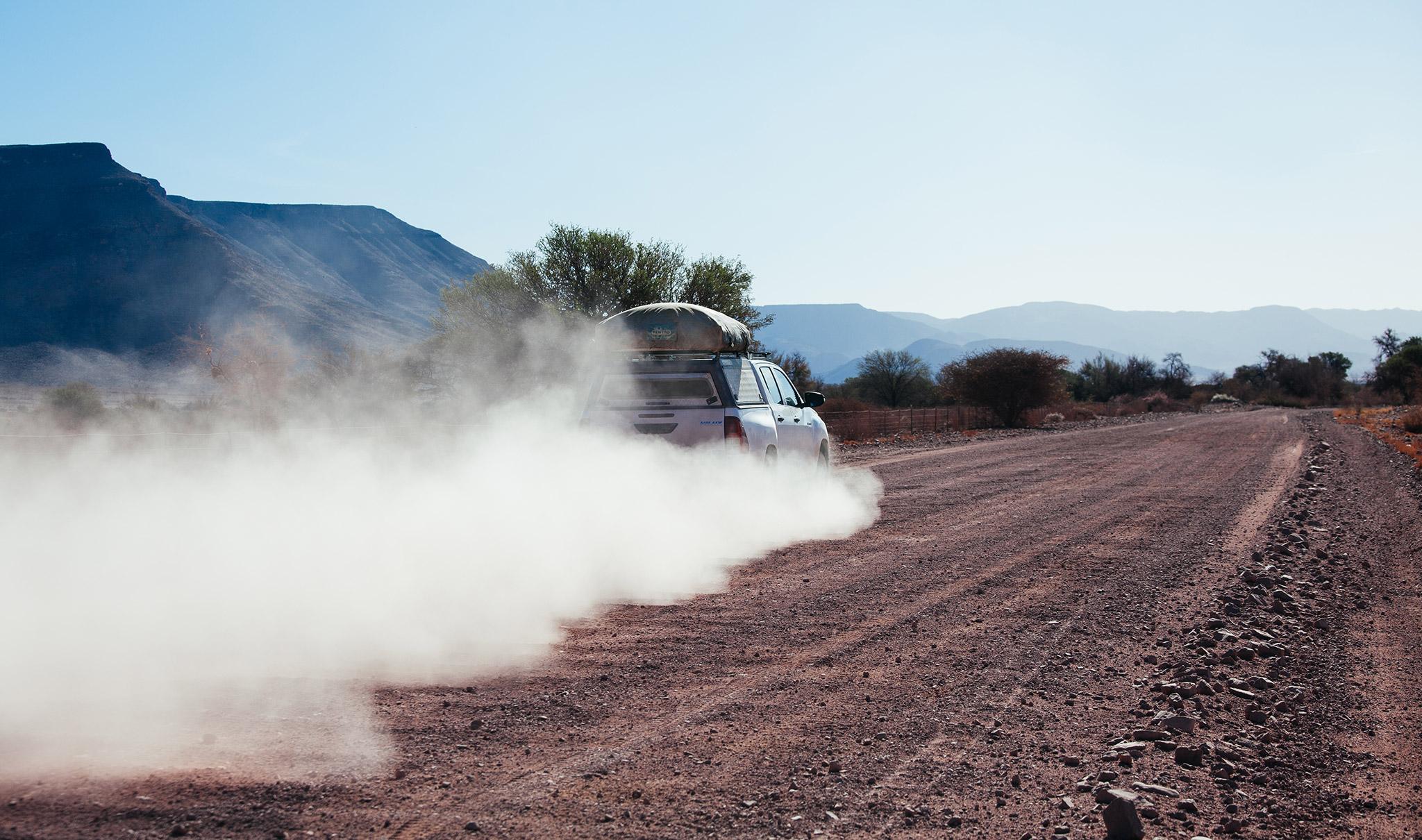Namibia is famous for its deserts and the Etosha National Park, less so for its cities. The Namib, the Kalahari, the sand sea at Sossusvlei and the Etosha National Park are usually on the set agenda when visiting the desert state. But once in the country, a some of the cities are worth a visit as well. But: which cities to visit in Namibia? More on that in today’s blog.
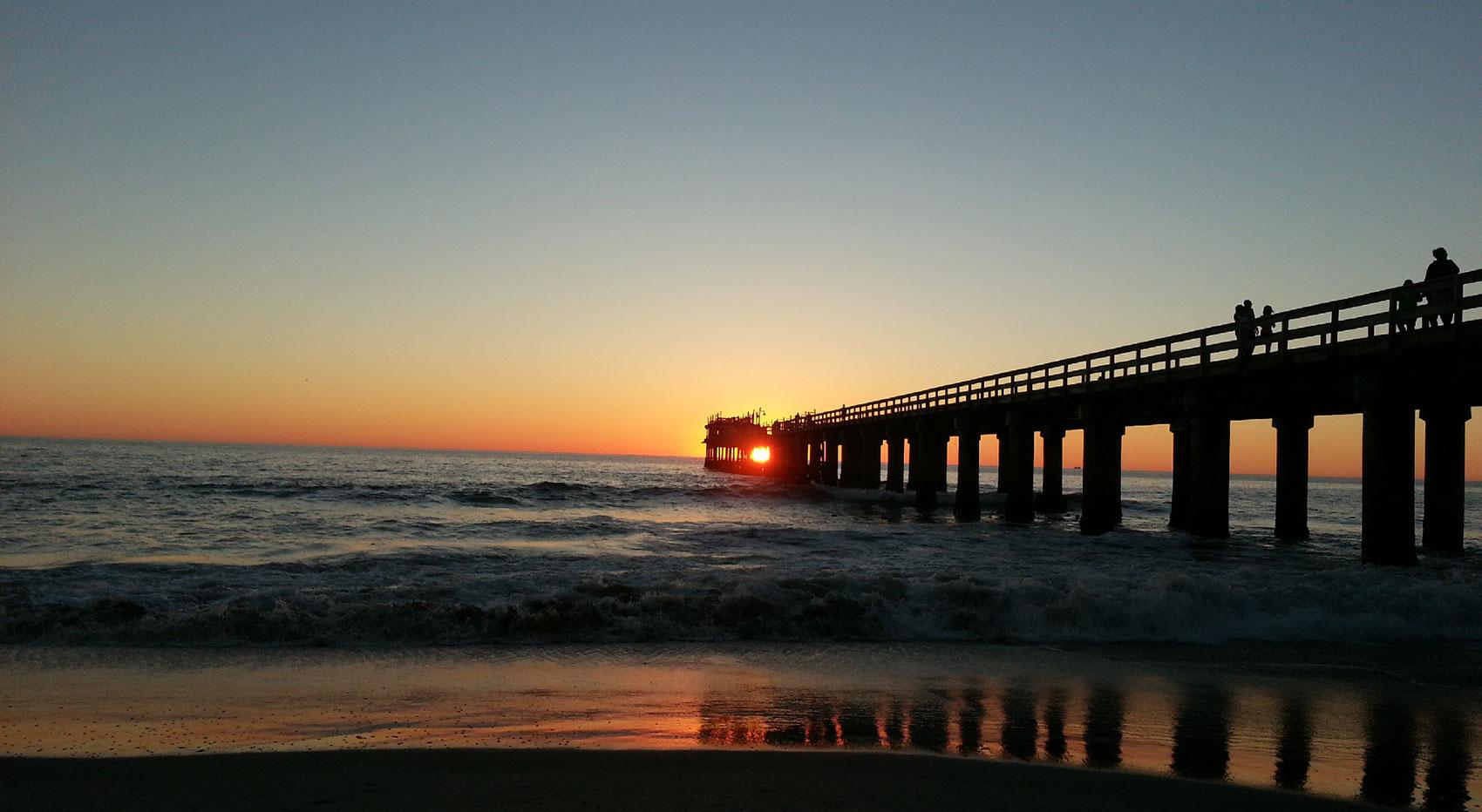
Going on a city trip to Namibia?
Above all, Namibia offers nature and culture. Exciting landscapes and the mixture of modern-oriented and traditional ethnic groups are the tourist driving force of the nation. Urban developments, as we know them in Europe, only began here – unlike in Europe – from 1883. It was the year in which Heinrich Vogelsang entered the country on behalf of the Bremen merchant Adolf Luderitz. It is the beginning of the German colonial era in what was then German Southwest Africa. Cities like Luderitz, Windhoek and Swakopmund emerged, which still show their colonial heritage today.
But even before that there were already settlements of African peoples, such as the Hereros, which later developed into cities. Okahandja is one of them. Many Hereros also live in Omaruru. This gave missionaries reason to found a mission station in the Omaruru area, which eventually expands into a city. Another city that started out as a mission station, in this case for the Namas, Keetmanshoop begins its city-like development well before the arrival of the Germans. The situation in Walvis Bay is different yet again, founded by the British for military-strategic considerations.
Even after the German colonial era, cities developed. On behalf of the League of Nations, the UN’s predecessor, the South African government takes over the so-called mandate power over today’s Namibia. In order to simplify the administration of regions, cities are founded. Including, for example, Opuwo in the northwest of the nation.
There are of course a lot more cities in the country that are interesting. In today’s blog, however, I want to start with the above-mentioned places and briefly introduce them. In future blogs I will then give you tips on what is going on in the vicinity of these locations.
Which cities to visit in Namibia? – Luderitz
Luderitz is the place where German colonial history in Namibia begins. The city’s name goes back to Adolf Luderitz, who wants to build his business empire from here. His envoy, Heinrich Vogelsang, acquired large areas in this region under the historical “mile swindle”. In his treaty negotiations, he “agrees” on “geographical miles” with the native Nama chief Fredericks. Fredericks understands miles as the British mile (1,608 m). But Vogelsang insists in meaning the German geographical mile which is around 7,428 m long. Over the following 32 years – until the Germans are “thrown” out of the country by the British in World War I –, it does not remain the last fraud against the Namibian people.
In a next step, Adolf Luderitz tries to gain the protection of the German Reich and justifies it with an intervention by Great Britain that is “to be feared”. Bismark is reluctant to agree, but he agrees. When the Germans hoisted the imperial flag in the Luderitz area for the first time in August 1884, they called what is now Namibia “German Southwest Africa”. The “Luderitz” settlement becomes the first capital of the newly founded colony.
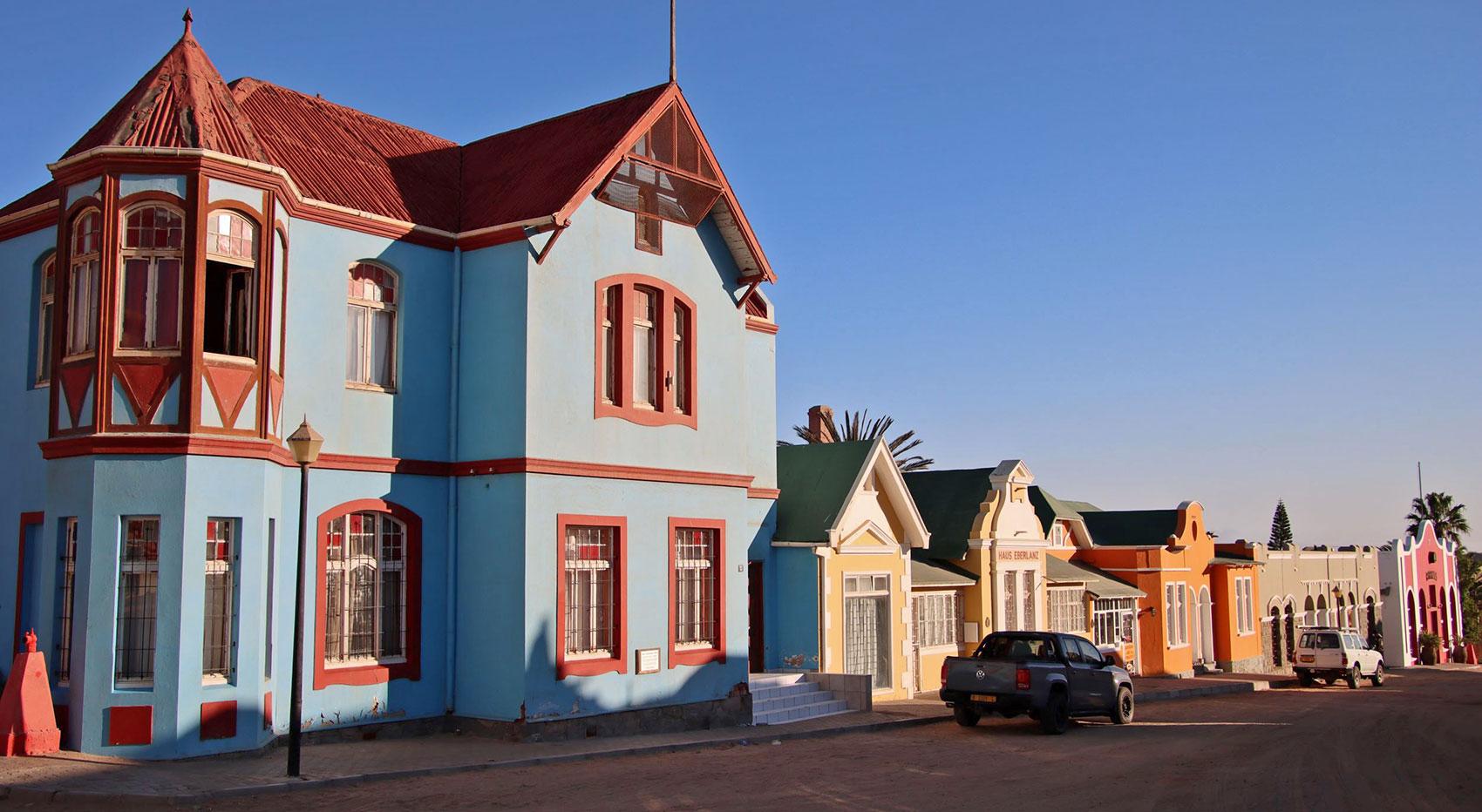
Due to its very remote south-western location, however, it is not ideal as a capital and port city in the long term. In addition, the city does not really develop after the founding years due to the lack of drinking water and the isolation from the productive regions of the highlands. Only when diamonds are discovered in 1908 does Luderitz gain importance again. At least until about 1920 – from the 1920s onwards, diamond mining shifts further south. Today, a modest fishing industry remains, some boatyards, some smaller carpet weaving mills, and the Karakul sheep trade.
The cultural, economic, and social upswing of the city after independence is thanks not only to tourism but also, amongst others, to the zinc mines of Rosh Pinah, whose economic success is reflected in Luderitz. The still well-preserved Art Nouveau buildings from the Wilhelmine era are interesting for tourists. Some streets enjoyed lavish restorations during the 1990s. Today, nine of the approximately 130 national monuments in Namibia are found in Luderitz, including the Goerke House and the Felsenkirche (Rock Church). In addition, Luderitz is located in a panoramic bay with beautiful excursion possibilities.
In the Luderitz area, you can visit the diamond ghost town of Kolmanskop and with a bit of luck, you can spot wild horses near the small town of Aus.
Our self-drive tour The Best of Namibia as well as our guided tour Magnificent Namibia will take you to Luderitz.
Keetmanshoop in Southern Namibia
Keetmanshoop is the capital of the south and is right on the main road to South Africa. In the 1850s, it was the Kharo!oan clan, a splinter group of the Red Nation Nama people, who settled here on the banks of the Swartmodder. Soon after, the Rhenish Mission found in them their next target audience for conversion and founded their new branch in Keetmanshoop in the 1860s. The merchant and banker and director of the Rhenish Mission, Johann Keetman, supported the mission financially, but was never on site. The city got his name, supplemented by the addition “Hoop”. It stands for Keetman’s hope (“Hoop”) to bring peace through Christianization in a region where, according to mission reports, different tribes were fighting.
When the German protection troops of the colonial government set up a military base here in 1894, there was already a very German-influenced settlement. Under the influence of South Africa years later, the small town developed into an important trading center. Sheep breeding in particular has had a major impact on the economy here. Wilhelminian and Cape Dutch architecture from around 1900 with early Art Nouveau influences give the town center a charming flair to this day.
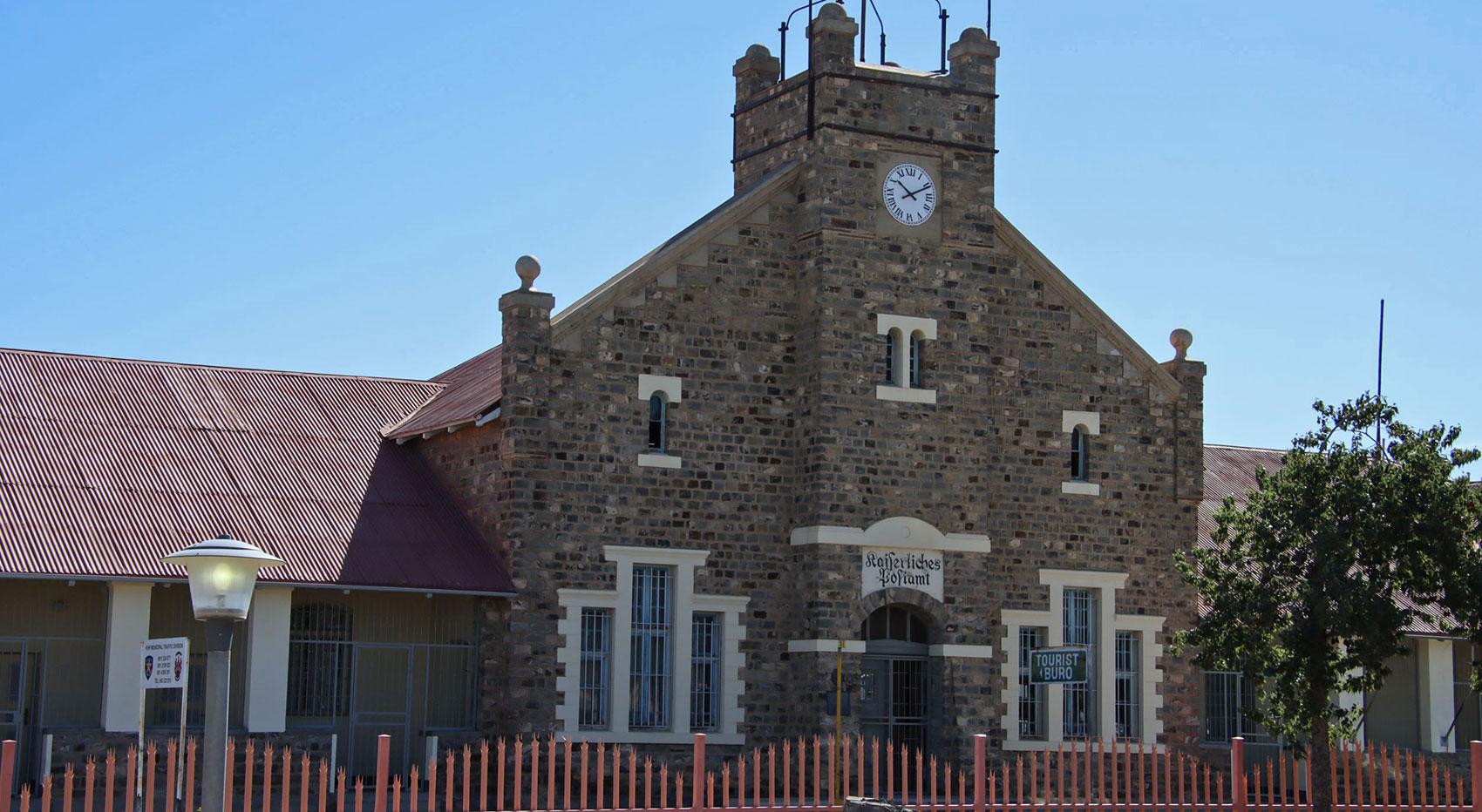
One of the city’s attractions is the former Rhenish Mission Church, built in 1895 from local granite. It was constructed around a mighty camel thorn tree, whose trunk and branches the builders transformed into a pulpit. No one preaches here anymore, because the church is now the museum of the history of the region. Also worth seeing are the train station, completed in 1908, and the Imperial Post Office, built in 1910, with its striking tower, which served as a transmission mast for the former telegraph station. But instead of telegrams, there is now only a tourist information, sharing among other things restaurant tips, for example: If you want to combine colonial with rustic and ideal, I recommend dinner at the Schützenhaus.
From Keetmanshoop, you can reach the Fish River Canyon as well as Luderitz.
Which cities can you visit in Namibia? – The coastal town of Walvis Bay
Abundant whale and fish populations off the coast of Walvis Bay attracted European and American whaling and fishing boats as early as the 18th century. At the same time, the bay is suitable as a natural and safe deep-water port, where larger ships can anchor. The English were the first to recognize the strategic military and geopolitical opportunities and claimed this part of the coast for themselves in 1795. This creates opportunities for trading with the locals. Topnaar-Namas settle, as do British traders and naval employees. The settlement eventually blossomed into the port city of Walvis Bay. Architecturally, the place is not worth seeing. But it is interesting – not only historically.
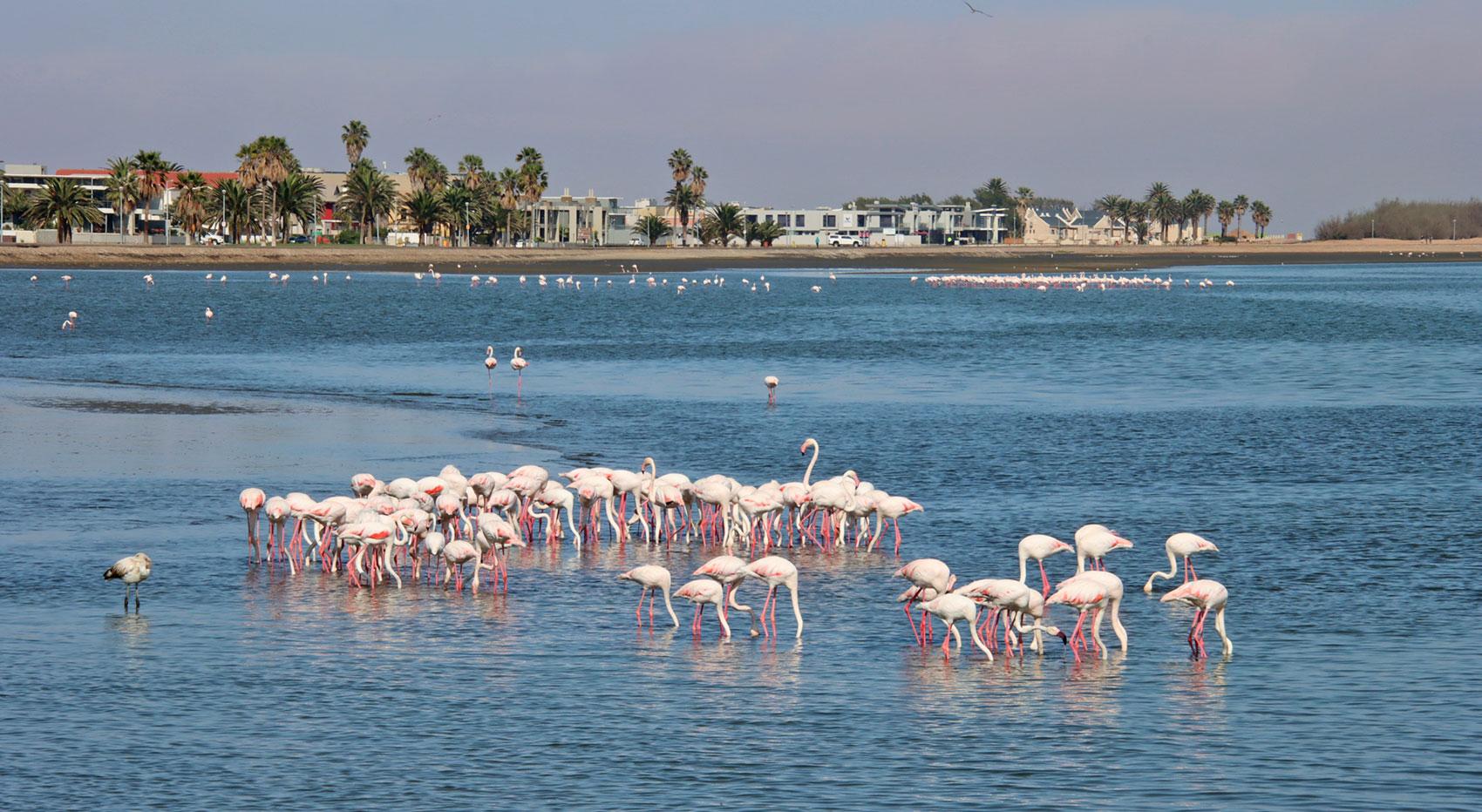
Walvis Bay means something like whalefish bay. It is possible that those who gave it their name at the time were not aware that whales are not fish but mammals. But that’s not the only entertaining thing about the town. The sand tongue “Pelican Point” reaching far into the sea protects the harbor on the one hand. On the other hand, it is also a destination for seal and bird lovers. One can drive a 4×4 to the outermost lighthouse or paddle there in a kayak. If you don’t want to go that far, you can stroll along the bay promenade and look forward to large colonies of flamingos in the shallow, near-shore waters of the Atlantic Ocean. You can also eat well here. And at the “Anchors Waterfront” you can even combine this with boat trips and souvenir shopping.
You can stop over in Walvis Bay on this self-drive trip across Namibia and Botswana or this Namibia Highlights tour.
Which cities are worth visiting in Namibia? – Swakopmund the Adventure Capital by the Atlantic Ocean
Swakopmund is the city in Namibia where the German colonial history is best understood. Built in 1892 as a port city, this place is the most “German” city in the country. Wrested from the Namib Desert as a living space and located by the sea, “Swakop” offers more than just German vanity though. Since Luderitz soon turned out to be geopolitically and militarily unsuitable as a port city, the search for a new location began further north. Regrettable at that time: Walvis Bay has the ideal conditions for such a port, but here the English are faster. Only about 35 km north of Walvis Bay, Swakopmund seems to be the next best option for German colonial interests.
Many buildings from that time still adorn the streets today. The local history museum shows exhibits from this era and the gastronomy and hotel industry leaves no doubts. They don’t skimp on German names: including the Hansa Hotel, the Brauhaus, the Einödentaverne, the Fachwerk Biergarten, or Die Muschel. There is even a rather large section of German-language literature in two bookstores.
As a port city, Swakopmund has long ceased to be important. But it has turned into a tourist jewel that spoils its guests with arts and crafts markets, nice cafes, inviting beach promenades and impressive colonial architecture.
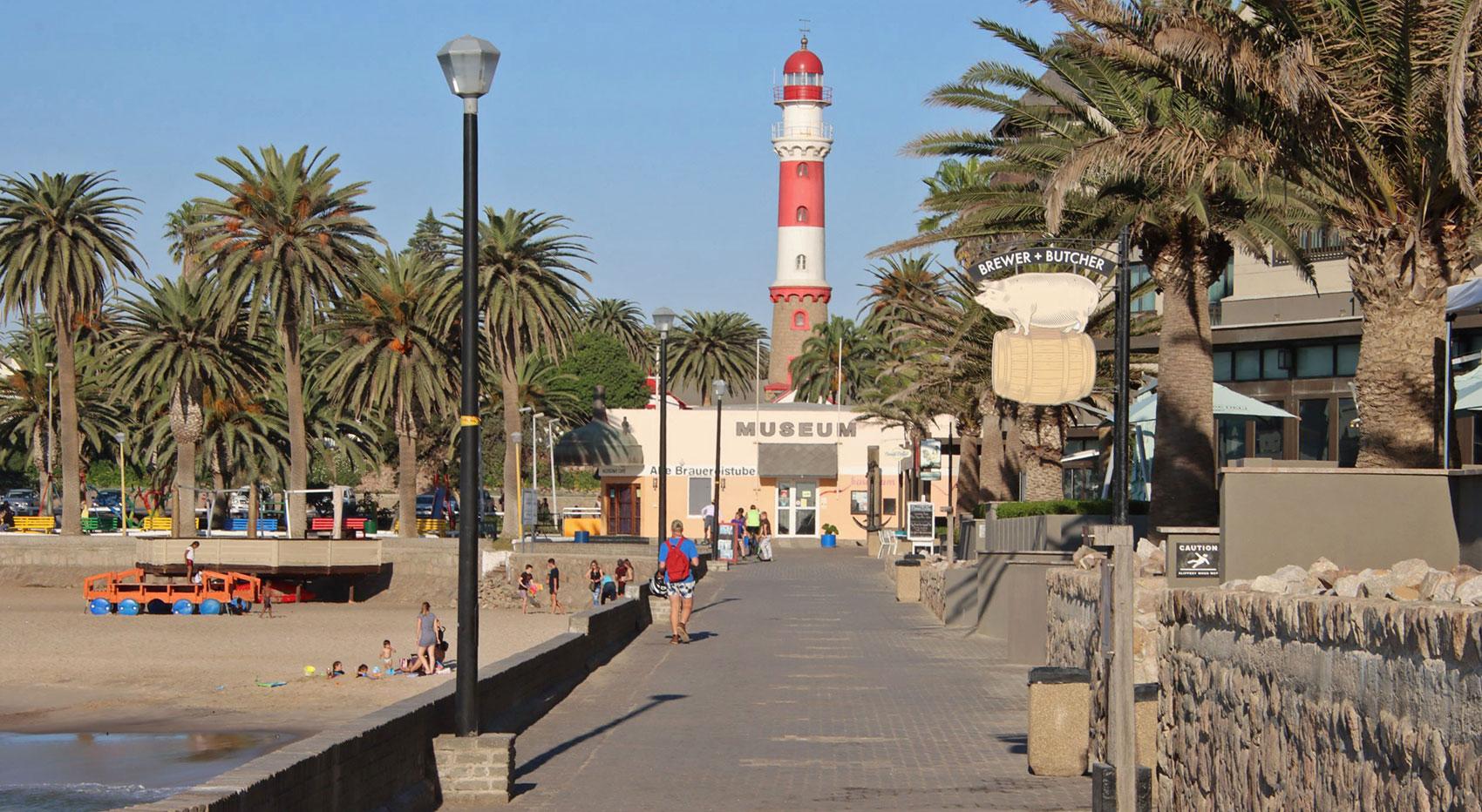
From here, you can also go on different types of adventure activities in the city’s surrounding area. From “Little Five” desert tours, fat bike tours to boat cruises and scenic flights across the Namib. Many of our guided tours and self-drive trips will take you to Swakopmund, for example our Fascinating Namibia guided tour and Namibia Highlights self-drive trip.
Which cities to visit in Namibia? – Namibia’s capital Windhoek
When the German Schutztruppe laid the foundation stone for the Alte Feste and thus the founding of the new capital of the colonial empire on October 18, 1890 in today’s Windhoek, the traces of earlier settlements can still be seen. The Jonker Afrikaners and with them a German missionary lived here but had to flee from vengeful enemies about 10 years earlier. The military superiority of the Germans initially makes them immune to such raids. In the years that followed, the governors of the southernmost extension of the German Empire controlled the country from here. Windhoek is geographically very central and roughly on the dividing line between two large ethnic groups that at this time are hostile to one another.
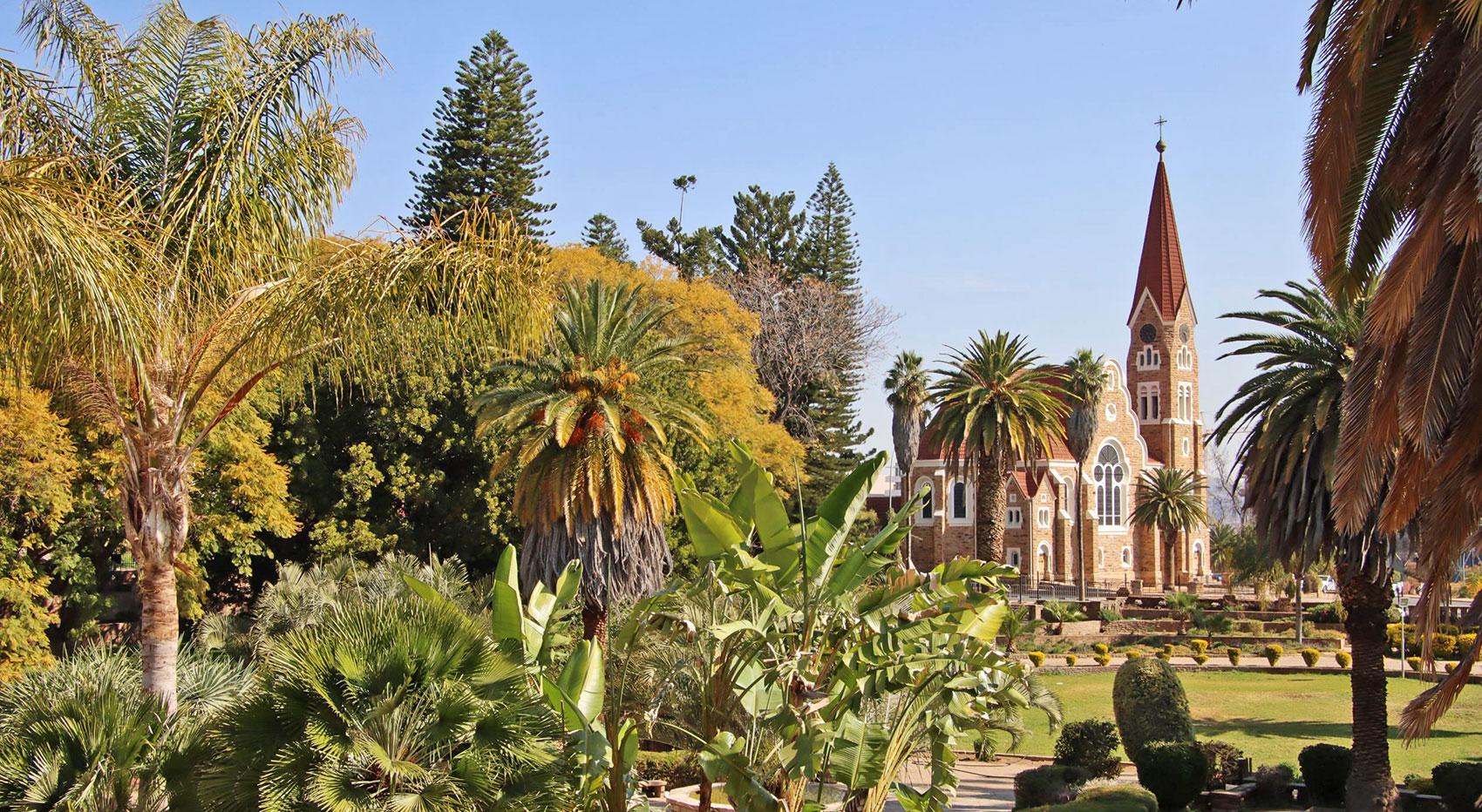
Other colonial buildings were built around the Alte Feste, including schools, commercial buildings, villas and also the Christuskirche (Christ Church) for the German religious community and the Tintenpalast (Ink Palace) as a government and administrative building. This “old town” zone, which is largely preserved, is of course not as remarkable in age as many European old towns. But Windhoek is worth a visit. Also because of the cultural offerings with its interesting museums such as the National Museum, its arts and crafts markets such as the Old Brewery and some highly recommended bars and restaurants such as Joe’s Beerhouse.
You can explore Windhoek together with one of our local guides on a guided city tour.
Cities in Namibia – Okahandja
Okahandja is, so to speak, the “Valley of the Kings” of the Herero people. Here are the final resting places of their Paramount chiefs, the chiefs of all chiefs. The iron-barred cemetery in front of Namibia’s oldest surviving church is the Herero’s holiest place. The Rhenish Mission Church, which is now classified and protected as an historical building, was built in the 1870s under the supervision of German missionaries. They influenced the people here even before the arrival of the German colonialists. By this time, the Hereros were already a power in the region.
In the end, however, they have no chance against the German colonial power. After Namibia’s independence, Okahandja becomes the center of demands for Germany to recognise its responsibility for the atrocities committed during its colonial days. In 2015, the then federal government acknowledges the genocide of the Hereros and Namas between 1904 and 1908 for the first time.
For a long time, a large part of the Hereros celebrate the commemoration of this era and its great Herero leaders every year. Over the years, more and more tourists take part in this “Herero Day” in August. But even if it seems so: it is not a tourist event, but a commemoration shaped by tribal and historical awareness. Internal rifts in recent years have put this holiday on the back burner for the time being.
Okahandja is known today for the craft market “Mbangura Woodcarvers Craft Market”. This is a large one and represented at both the northern and southern entrances to the city. Some visitors feel a bit under pressure here. Negotiating prices is recommended.
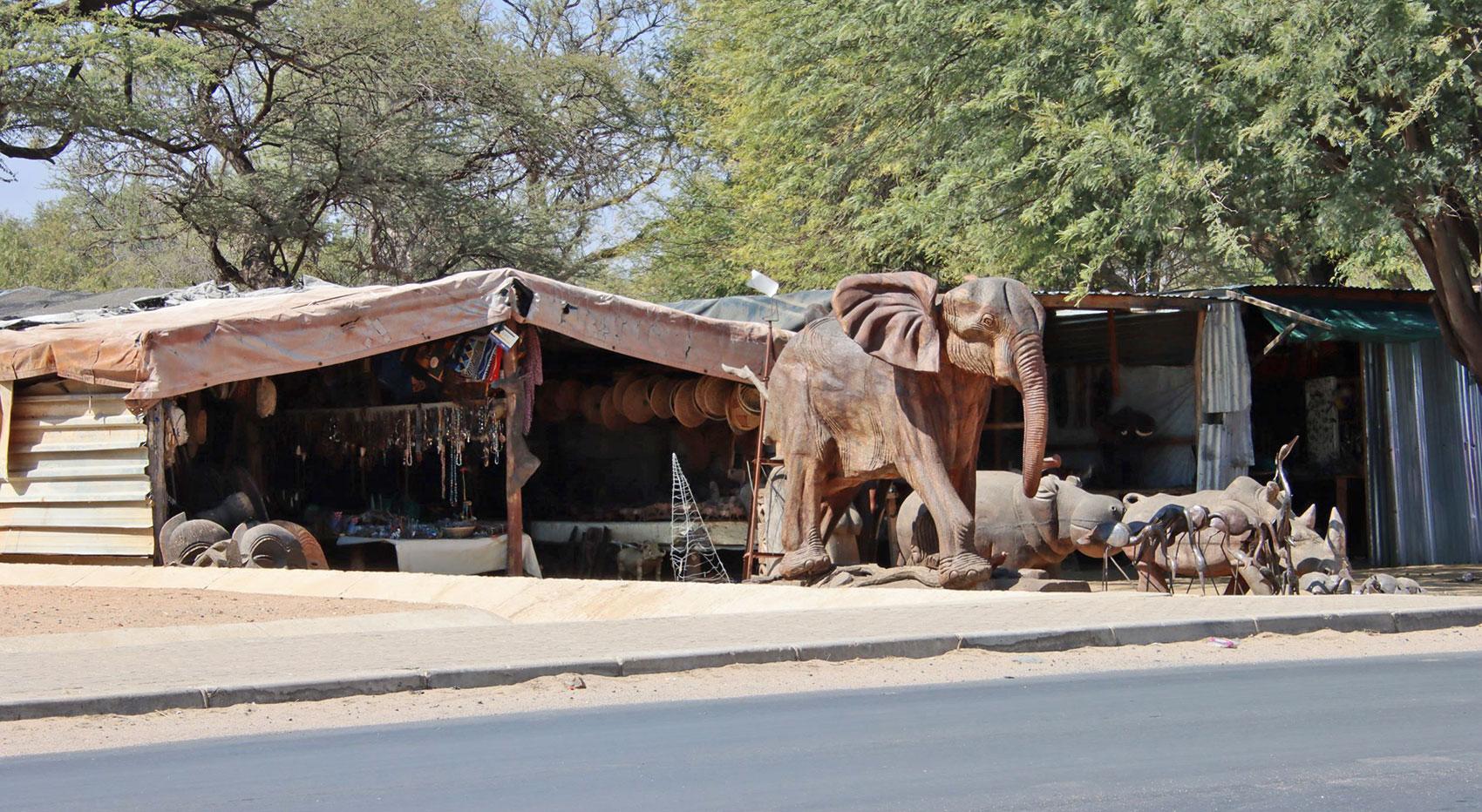
Omaruru in the Erongo Region
The name Omaruru is borrowed from the Herero language and refers to a bush in the Omaruru riverbed. This Gray stinkbush, it is said, turns cow’s milk into “bitter quark”.
Here, too, the Rhenish Missionary Church began its missionary work in the 1870s before the arrival of the German colonialists. Similar to Okahandja, there was already a settlement of a Herero ethnic group in place. An English Wikipedia entry states that there was even a brewery present from 1871. Perhaps it was thought that beer broadened religious horizons. What is certain, however, is that the Swede Axel Wilhelm Eriksson set up a trading post here at the time. This puts Omaruru on the map of a trade route between Angola and South Africa.
In 1894, the German colonial power establishes a Schutztruppe base in Omaruru. At the beginning of the Herero uprising in 1904, the Hereros besiege the town. The Franke Tower not far from the center commemorates the liberation of the Germans only a short time later.
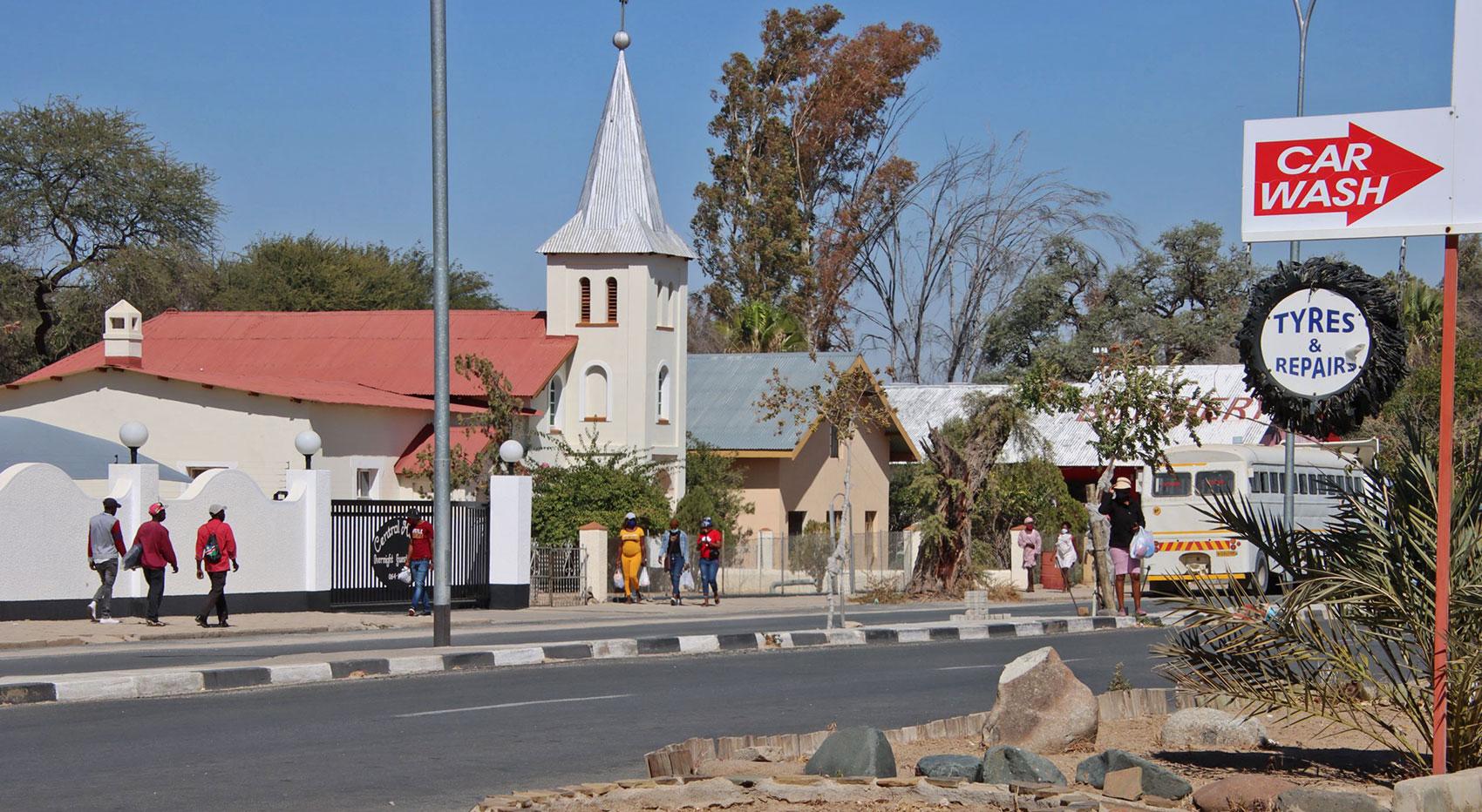
If you come to the city today, you will see the German-colonial influence, especially in the town’s architecture. Many Germans still live here. Omaruru has blossomed into an artist town, where Tikoloshe Afrika in particular is at the heart of artistic expression. Inspired by the forms of old to ancient weathered and withered roots and tree trunks, the (currently only male) artists of this workshop carve exciting wooden sculptures from small to 10 m high. But some accommodations also offer an artistic ambience. And since 2006, Friends of the Arts have made it their mission to organize the annual Omaruru Arts Festival.
Our self-drive tour across Namibia’s North as well as this guided tour take you to Omaruru.
Cities in northern Namibia – Opuwo
The route north through the Kaokoveld leads many through the town of Opuwo. There are no noteworthy sights here. The administrative center founded by the South Africans in the 1960s does not look pretty, nor is there an interesting museum within the village. At first it seems to be just the typical transit place that lives up to its name in the Himba tribal language: “It’s enough”.
If you stop here, you only do it to fill up and go shopping – supermarket shopping. In this town you will find the last large food market before continuing further into the Kaokoveld or up to the Epupa Falls. At least there is a nice café right next door. Clothing and shoes can only be found at simple local market stalls. And with that, I hope your expectations are now at absolute zero.
You are probably already looking at the map for ways to avoid the place. But don’t do that. The real charm of this little town lies in something else and makes it a real highlight in the whole country for me: There is no other town in Namibia that is as visibly colorful in terms of culture as Opuwo. Centuries-old tradition and modern times meet here. Opuwo is the regional center of Himba culture. You will also meet members of the OvaTwa, OvaTjimba, OvaZemba, OvaHerero and Damara here. In colorful clothes, opulent jewelry, and painted skin, they transform the gray place into a rainbow city. You can’t get enough of it; you want to stop and get in touch with people.
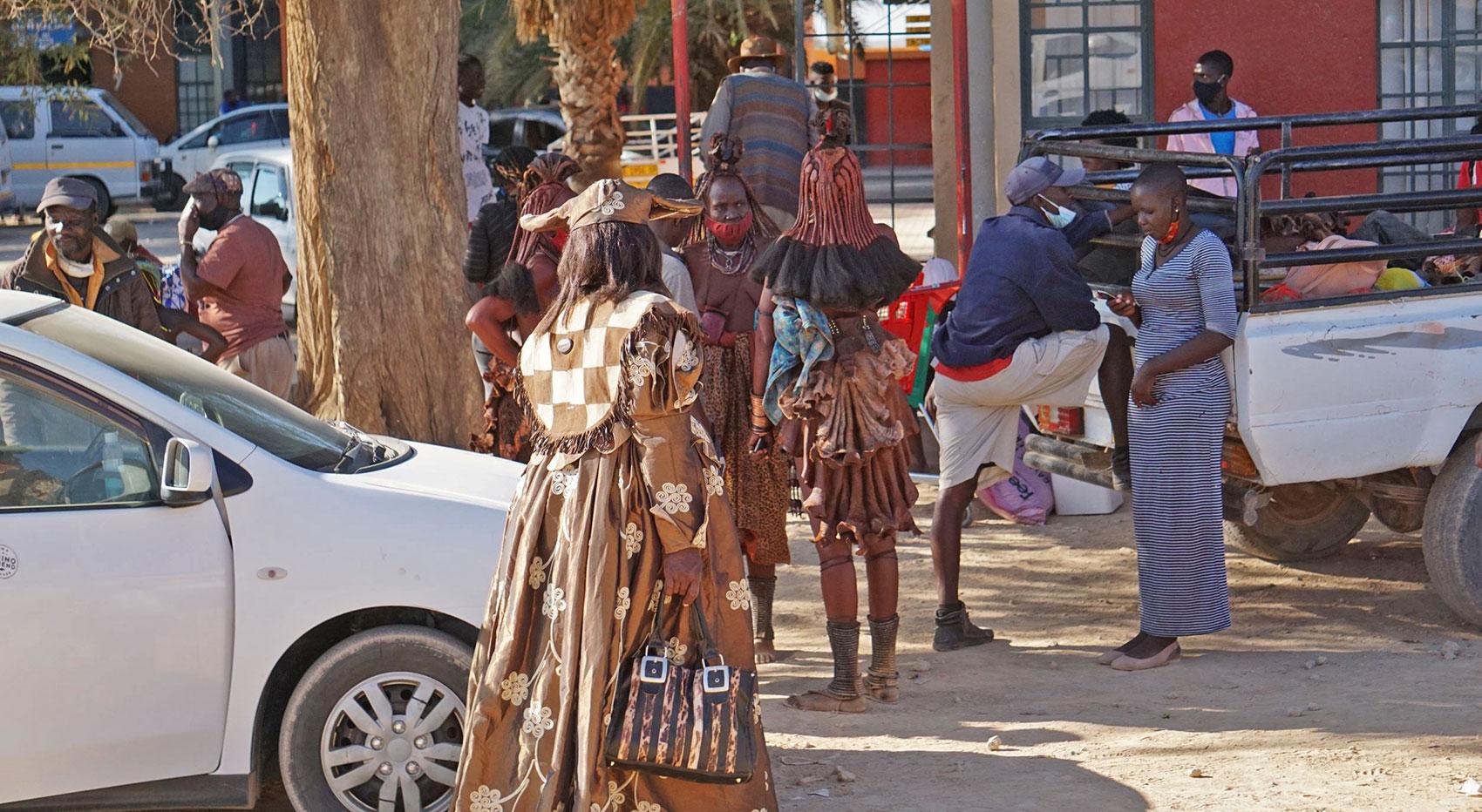
Admittedly, the cities of Namibia are not necessarily the figureheads of the country. Pure city tourism with overnight stays is most worthwhile in Swakopmund, Luderitz and Windhoek. However, all of the villages described above also offer an excellent starting point for beautiful and exciting excursions in the surrounding area. We are always available for questions and support in planning your Namibia vacation – whether on a guided safari or a self-drive tour. Here on site we are always well informed about the current situation. So get in touch with us!





